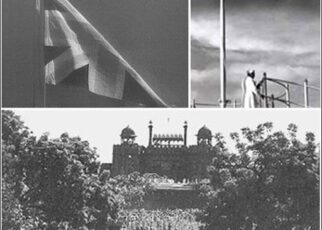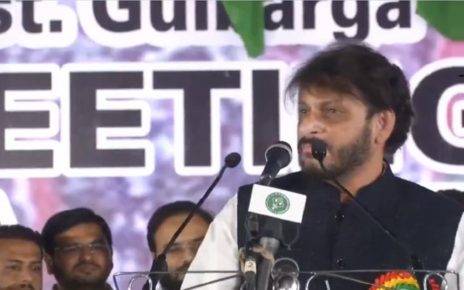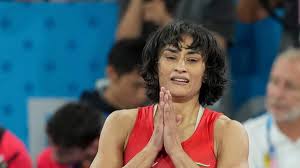At the beginning of the 17th century, India’s share in the world economy is 22.6%. That is almost equal to the total share of Europe (23%). By 1952 our share had fallen to 3.8 percent. These predictions made by Cambridge historian Angus Madison are enough to tell us how much our country’s economy collapsed during British rule!
The country was financially crippled by the time of independence as the British rulers completely undermined industrialization in India. Now, 74 years later, we are the 5th largest economy in the world. A look back at the 75th Independence Day celebrations on the role of our economic policies in moving from extreme poverty to a digital economic powerhouse and the key changes that have taken place in our economy.
Nehru’s Mixed Economy Approach
The country’s first prime minister, Jawaharlal Nehru, began treatment for a chaotic economy after independence. He opted for a development approach with shades of socialism with the goals of self-sufficient economic growth, social justice, and poverty alleviation. The Industrial Policy Resolution introduced in 1948 to allow the government to act as an entrepreneur paved the way for a mixed economy in the country. The establishment of public sector companies was given the highest priority. Policies have been devised to keep private companies entirely in the hands of the government. It was here that the license system of the country was born.
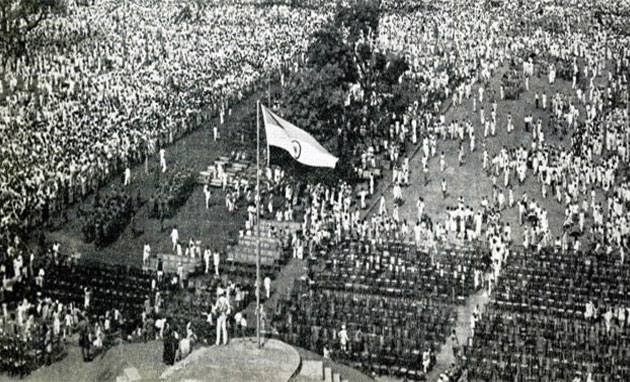
The government continued to dominate key industries such as steel, mining, machinery, telecom, insurance, and electricity. Influenced by the policies of the then Soviet Union, the Nehru government, which designed the Five Year Plans, set up a Planning Commission in 1950 to oversee all government plans. In 1951, India implemented the first Five Year Plan. All these five years have focused mainly on agriculture and irrigation projects. Policies are designed to achieve economic growth through large savings and investments. This first five-year plan yielded good results. The annual GDP growth rate of 3.1 percent was surpassed by the targets of 2.1 percent.
License System
The Second Five Year Plan of 1956 paved the way for the rise of public sector companies in the country and led to the emergence of the Licensing System. Industries in India are divided into three categories. The first and second groups include companies with major, strategic priorities that are entirely in the public sector. The third group included the consumer industry and left it to the private sector. However, as the government devised policies to allow the private sector to exercise complete control over the licensing system, everything had to be approved by the government, and the intervention of the authorities led to excessive corruption.
Infrastructure Development
Nehru considered the power and steel sectors to be crucial in government plans. He described the Bhakra Multipurpose Project on the Sutlej River in Himachal Pradesh as the newest temple in Renaissance India. Along with Bhakra-Nangal, several hydropower projects have lit up millions of homes in the country, run numerous factories, and irrigated millions of acres. With the target of 60 lakh tonnes of steel production during the Second Five Year Plan period, the Rourkela Steel Plant, with the help of Russia and Britain, undertook the construction of the Bhilai and Durgapur Steel Plant in collaboration with Germany. Many Institutions and commissions such as the Indian Institute of Technology (IIT) and the Atomic Energy Commission, were started during Nehru’s reign. Under Nehru and later Prime Minister Lal Bahadur Shastri, the Green Revolution and the Dairy Revolution are initiated, which contributed to the self-sufficiency in food grains and dairy took place.
Indira Gandhi’s Era
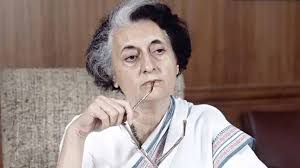
The immediate death of Nehru and Shastri led to political instability in the country. On June 6, 1966, Prime Minister Indira Gandhi reduced the rupee to 57 percent against the dollar from 4.76 to 7.50 against the dollar in the wake of the payments crisis. Despite the boom in exports, prices in the country have skyrocketed and the economy worsened. On July 20, 1969, Prime Minister Indira Gandhi announced the nationalization of 14 private banks in the country with the aim of increasing agricultural credit. However, intense political interference in the activities of public sector banks led to crony capitalism, which led to a sharp rise in arrears. Indira Gandhi, who imposed an emergency in the country on June 25, 1975, lost badly in the 1977 elections.
Demonetization 1.0
The Janata Party, led by Morarji Desai, which came to power in 1977, canceled Rs 1,000, Rs 5,000, and Rs 10,000 banknotes to curb black money. The then Minister of Industries, George Fernandez, whipped foreign companies, and the multinationals IBM and Coca-Cola stopped Indian operations
Rajiv regime was the beginning of the IT and telecom revolution
Rajiv Gandhi, who took over as the young Prime Minister at the age of 40 after the assassination of Indira Gandhi in October 1984, undertook various reforms such as reduction of direct taxes and increase of income tax exemption limits. Rajiv is also credited with initiating the information technology (IT) and telecom revolutions in the country.
P.V Narasimha Rao Father of Indian Economic Reforms
India was on the brink of bankruptcy in 1991 with the payments crisis. With this, the then Prime Minister P.V Narasimha Rao and Finance Minister Manmohan Singh took the country hostage by borrowing thousands of crores of gold as collateral. The revolutionary reforms that turned our economy around, along with the end of the license system opened the door for simplification. With this, foreign companies queued up for India and contributed heavily to jobs.
Vajpayee’s Rule
Reforms were also in full swing during the reign of Atal Bihari Vajpayee, who took over as Prime Minister on behalf of the National Democratic Alliance (NDA). The door was opened for the privatization of public sector companies. Videsh Sanchar Nigam Limited (VSNL), Balco, Hindustan Zinc, etc. were sold. Vajpayee is credited with changing the face of national highways under the name of the Golden Quadrilateral.
Manmohan Singh’s Era ‘
Manmohan Singh, who took over as Finance Minister in 1991, became the Prime Minister of the United Progressive Alliance (UPA) in 2004. The Manmohan Singh government has laid the groundwork for a number of social development schemes, such as the Mahatma Gandhi National Rural Employment Scheme. These schemes were funded by the sale of a 5–20 percent stake in public sector companies. During the ten-year rule of Manmohan Singh, India achieved the highest GDP growth rate (8–9%). However, it started affecting too after the global financial crisis of 2008. In addition, heavy loans to corporates have become stubborn, and various scandals such as 2G and Coalgate have suffocated the Manmohan Singh government.
Modi shocked the Nation by the cancellation of notes …
During the Narendra Modi-led NDA regime that came to power in 2014, the people of the country underwent many revolutionary reforms as well as severe shocks. On the night of November 8, 2016, Modi shocked the nation by canceling Rs.500 and Rs.1,000 notes and announcing the biggest demonetization. The first Rs.2000 note was introduced in the country. This marked the beginning of the digital revolution in the country, even though people could not afford it. On the other hand, the Goods and Services Tax (GST), which is said to be the largest tax reform in the country, has been implemented and the reforms have been pushed to new heights. The Planning Commission was replaced by the Niti Aayog. On the other hand, the Modi government has accelerated the privatization of public sector companies since coming to power for the second time in 2019. The stake in LIC was also put up for sale. It can be said that Modi has succeeded in creating educational and job opportunities with new ideas like Atmanirbhar Bharat, Make in India, Digital India, and Startup India. Under Modi, India became the fifth-largest economy in the world.
No matter the challenges a bright future Ahead
The abolition of Currency notes, the implementation of GST, the slowing down of our economy by the blow of arrears in the banks. Now corona crisis. The nationwide lockdown resulted in a 24.4 percent GDP collapse in the June 2020–21 quarter. The Indian economy has suffered the worst recession in its history. In the years since independence, the economy has reached nearly $ 3 trillion … but economic inequalities among the people continue to rise. Our neighbor Bangladesh also surpassed us in per capita income ($ 2,227). At present, our rank in the world in terms of per capita income with $ 2100 is at the bottom of the 144 level. However, the fact that they constitute 65 percent of the country’s population under the age of 35 raises the belief that there is a future for young India. The PWC estimates that 12 million people will be added to the workforce each year over the next two decades … by 2030 the working population (15–60 years old) will reach 100 million. According to economists, this will reduce economic inequality in the country and make the $ 5 trillion economy targeted by the government a reality, making India the third-largest economy in the world.
Read about myths and facts about left handers
Discover more from Thenewsdoor
Subscribe to get the latest posts sent to your email.


